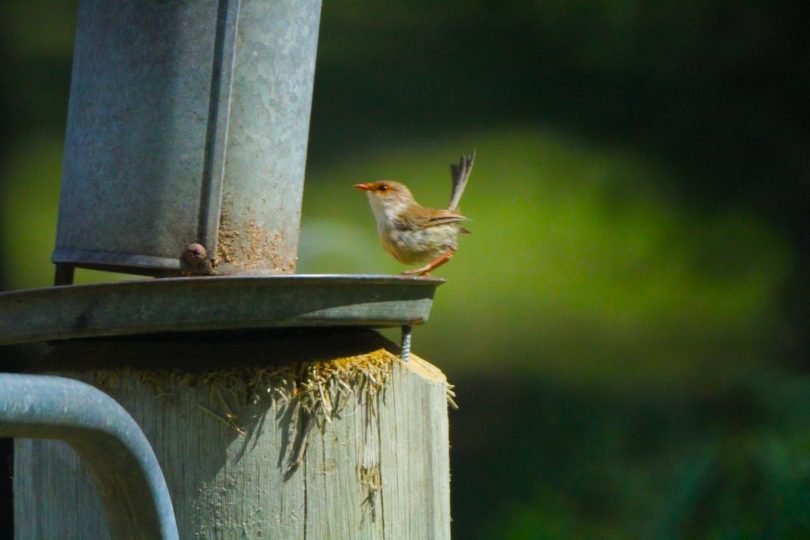
A rainbow lorikeet in care. Photo: Janelle Renes.
Well-meaning animal lovers may inadvertently be causing an increase in bird mortality along the NSW South Coast.
Rainbow lorikeets, well known for their lack of social distancing and cheeky natures, are most at risk with reports of more than 140 being found dead in the region stretching from Nowra down to Moruya during the past few months.
Wildlife rescue group WIRES has sent some of the dead birds to a research team at Sydney University Camden for testing, and early results showed E.coli bacterium in three out of four bodies.
While testing is continuing to try and isolate the source, WIRES Mid-South Coast avian coordinator Janelle Renes said communal feeding stations were thought to be contributing to the spread of the disease.
“We’re not sure yet whether the bacteria is in something the birds are eating or drinking, but the saddest part is because rainbow lorikeets are such social birds, they’re passing it on to each other very quickly,” she said.
“The sick birds are unable to fly, they are underweight and their claws are clenched. Some come in and seem to be OK and then just die.
“The sick birds we’re treating are not able to hold any drink. When we try to rehydrate them it’s just coming out of their noses and they’re dying within hours.
“A healthy lorikeet is about 140 grams, but these sick ones are coming to us under 100 grams, which is very sad to see.”
The sick birds are also more vulnerable to predator attack on the ground. A healthy lorikeet rarely falls victim to dogs and cats, but WIRES has seen an uptick in these injuries, as well.
WIRES is working closely with researchers at Sydney University, who are trialling whether a combination of strong antibiotics can help treat sick birds, but in the meantime the public can help slow the spread of the bacteria.
Years of drought followed by the Black Summer bushfires may have resulted in more people providing food for local birds which are struggling to find any other source.
WIRES is now pleading with them to stop, and instead plant natives in their gardens to attract birds in a natural way.
“We’re asking people not to feed birds as it can spread disease,” said Ms Renes.

A bird visits a feeding station on the NSW South Coast. Photo: Jake Cartwright.
“Anyone who has a bird bath in their garden, please clean them every single day with watered down bleach and a good scrub so we can make sure we stop the disease spreading.”
Ms Renes said WIRES has knowledge of 140 lorikeet deaths, but social media posts suggested the toll could be much higher. There are reports of birds dropping from the trees in groups of up to half a dozen.
At the same time last year, WIRES reported less than 40 deaths.
More tests on the birds’ tissues will be conducted to find out if there were any other causes of death, with results expected in the next few weeks.
“Professor David Phalen [at the University of Sydney] and his team have done a fantastic job testing, and we’re keen to get facts out to people about what they can do to help,” said Ms Renes.

A friendly rainbow lorikeet in WIRES care. Photo: Janelle Renes.
“We are trying antibiotics under David’s supervision, but we’ve had no success so far. We are waiting for further test results … sooner rather than later.”
The bacteria does not appear to have spread to other bird species, but the public should report other sick or dead birds to their nearest WIRES branch.
In the NSW Central West, a spate of raptor deaths is more likely the result of the birds eating mice poisoned during the current rodent plague.
“Because they fly off and die, we don’t know how many are affected,” said WIRES media officer John Grant.






